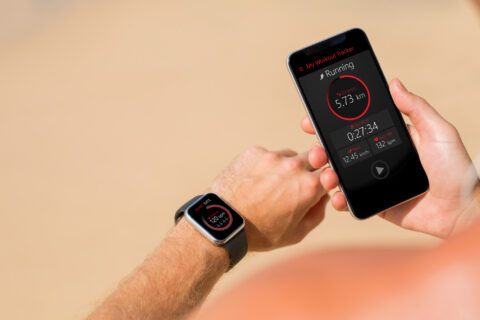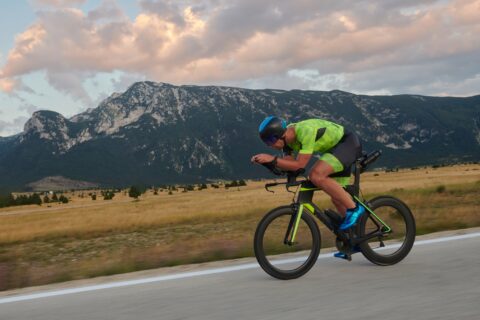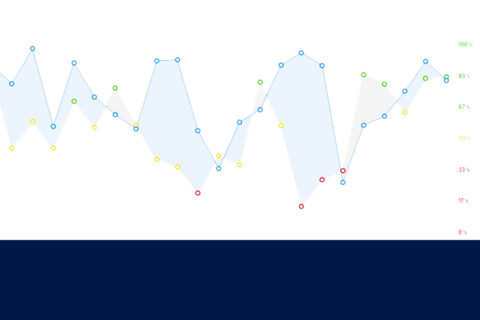Coach Ryan Kohler and Trevor Connor demonstrate how to interpret pedaling cadence data and look for signs of poor workout execution.
Video Transcript
Trevor Connor 00:02
Okay, welcome back, we are here with yet another screen share of training files, to hopefully help you with your training, given our coaching through screen shares, because this is something that we can’t do on podcast. So, Ryan has brought up one of his athlete’s files, and wants to tell us a little bit about it, wants to tell us a little bit about why we’re looking at something that seems like a really good first interval, and then kind of a failure after that, Ryan, what’s going on here?
Failure After the First Interval
Ryan Kohler 00:39
Yeah, this started off pretty nicely, and then it was just sort of a complete breakdown. So, the plan here, as you could see was kind of three by twelve minutes at sweet spot, so subthreshold, and then there were some, some bursts, you know, thrown in there, where we were going up to a higher power and higher cadence. What happened with this athlete is that we had some strength training that was getting started as well, and with this athlete, one of the things we’re trying to figure out as well, you know, when should we do your quality sessions? And how should we split these up throughout the week? So, for this one, it was it was an interesting one, where we see this first set completed fairly nicely, but yeah, like you said, it just kind of broke down after that, and the athlete just couldn’t hit the power, you can see there’s a little effort here, and then, you know, waited a while tried to hit this again, but it just wasn’t really happening. So really, what ultimately, what this told us was that, you know, the recovery between the strength workouts, and then any other key workouts just needed to be pushed out even farther.
Looking at the Cadence
Ryan Kohler 01:50
So, what I looked at here is really the cadence, you know, we have heart rate, but I just took that out for now, so we could focus on the cadence. But, you know, one of the comments when we talked about this was that, yeah, the legs just weren’t there yet, they didn’t feel great, and that’s one of the things I always try to sort of tell my athletes is that, you know, when there’s a workout scheduled, and if you go into it, and you just don’t feel like you have the legs, if you go through a couple efforts, and you feel like the legs just aren’t there, they’re not, they’re not able to put out the power like like they normally would, then that might be a good day to just back off, make sure you get some rest, and then go into it again, when you’re feeling fresher. Figure out if there’s something that is impeding your recovery, or you are you sleeping poorly or not eating enough? But you know, use that as an opportunity to try and figure out why this is happening, and then we can make adjustments.
Ryan Kohler 02:48
So if I zoom in a little bit here, we see where the athlete was holding this subthreshold wattage, and then we have these little accelerations throughout, but almost immediately, you see this first one, the athlete was able to accelerate from about 88-90 RPMs, up to about 100, and then settled back down. But then by the second one, we’re already dropping now into the mid 80s, and really not much acceleration there, right, and then we come back down, and we’re kind of dropping, mid 80s, lower 80s, we hit this again, and now we’re getting up close to where we were on the first interval, dropping back down again, and you can see we’re now hitting some of those lower 80s, we get through one more little burst there at the end, and we’re not even hitting 100 RPMs, and then we go into the recovery. So, this is just a really good indication that “Yeah, the legs just weren’t there.” So with this type of workout, you know, it’s not really productive to continue doing this, you can see that the athlete tried to give it another go here, and even leading into that when this power was applied and started to work back up toward the previous wattage, we just see this cadence is just trailing off a lot, right? You try to give it another go, only reaching the low 90s, and yeah, if we were to just kind of draw a trend line down here, we’d see this very slight decline all the way through the workout to the end.
Ryan Kohler 04:11
So, this is just telling me that, you know, those requirements that are needed to do this kind of workout, one, just recruiting those muscle fibers to produce the higher powers and making the muscles you know, get them getting them recruited to contract quickly and forcefully, to make those little bursts happen, It just wasn’t there. So, because we had this strength training introduced at the same time, this gave us great insight to say alright, well let’s make sure we have more recovery after your strength days, so that we can more strategically place these in and give you better quality key sessions.
Trevor Connor 04:47
I’ve heard a lot of coaches say that the first place you see fatigue is in the neuromuscular side. So, when they’re talking about neuromuscular, they’re talking about that high speed, high power. So, you lose your your top end sprint, but you also lose that that speed, that leg speed. So, you’re going to go and do intervals, but you’re just going to kind of bog down and want to keep the cadence lower, So, yeah, this is a great example of that, where you can see the athletes struggling, wanting to just sit there and grind out at 80 RPM, probably wanted to go lower than that, but was trying to keep you happy and go with your targets, but you could see it was a struggle.
Whats the Expected Outcome?
Ryan Kohler 05:27
Right. Yeah. And that was, you know, one of the things I always try to put in my workouts now is just if there’s something you know, as I, as I build workouts for people, always sort of thinking, Okay, what’s the expected outcome? But then thinking about what’s leading into it? How could they be feeling from previous sessions? And so in certain cases, now, I’ll try to put in a comment thereof, “hey, pay attention to what your legs feel like,” and yeah, like you said, If you can’t, if you don’t have that acceleration, right at the beginning, maybe during the warm up, you know, that might be an indication that we need to be flexible with the training, and just push it off, and really making sure they know that, you know, they can make that call in real time, you know, and getting them to understand like, what that feels like. So, you know, for this athlete in particular, I mean, we see the warm-up, very progressive warm up and, you know, 90-95 RPM, and a couple little pushes here, you know, and then so this is a good thing to say, Okay, well, what did you feel going on in that warmup? Did you feel like the legs could accelerate quickly? You know, if not, then that’s a great indicator that Yeah, maybe we just dial this one back, save it for another day and move on.
Trevor Connor 06:36
I don’t know why, but just looking at this reminds me of when I took my ECG class, and we were looking at all these different heart arrhythmias, and this just reminds me of this one that we there our instructor put on the board, and first you see this normal heart rhythm, sinus rhythm, and then it gets really funky. We just asked the teacher, “What does that mean?” And teachers like, “Yeah, that’s, that’s not good.” That’s what this looks like, you got four heartbeats that, “Hey, that looks pretty normal”, And then it’s, oh, no, let’s, let’s get out the electrical shocks here, we got to get this guy recovered. But you also bring up, look at the heart rate of their heart rate falling down.
Ryan Kohler 07:21
Yep.
Trevor Connor 07:22
You bring up a really good point, too, the sooner you can identify this and just say, not there today, then you can turn it into recovery ride, reorganize your week, and maybe just come back the next day and do it right. The thing I’m noticing here is this athlete probably knew pretty early on, his legs weren’t great, and I admire his dedication, but he’s trying to force out something that wasn’t there, and did enough not to get adaptation, but enough to guarantee that he’d still be too tired the next day.
Normal Heart Rate
Ryan Kohler 08:00
Exactly. Yeah, I think that’s one of those its the tricky parts, when you have that, that workout on your schedule, and you want to see the day turn green, it’s hard sometimes to, you know, not push through. When it Yeah, and like you said earlier, when I brought the heart rate up, it just kind of trailed off, and it just seems like it, you know, it doesn’t want to get up there, all the way at the beginning here, too, I mean, what 94-95, one thing that I found interesting over the years was, and I’ve used this with athletes a little bit, and it’s been fairly successful was, asking them what their heart rate is, when they throw their leg over the bike, you know, before you really do anything, but just when you’re about to get on the bike, you know, try to get a feel for like, what’s that normal heart rate? What is it on a good day versus what is it on a day when you have a failed ride? You know, I mean, for me, when I get on there, if I see like, you know, right around 80-85 beats than I know, okay, that’s a good sign that’s gonna push things in the right direction. Other days, when I’ve seen a very low heart rate or a very high one, then that gives me some insight and it usually aligns with maybe not as great of a performance. So, you know, I like to see where those minimum heart rates even end at, you know, because that can be an indication that there’s just still some stress on the body and they just need more recovery.
How Cadence Tells You to Take a Break
Trevor Connor 09:21
Yeah, that’s a good point. I will give you an example, this is a story that’s happened to me dozens of times, I’ll have for example hill repeats scheduled, this Summer I went out did them, and look the first hill repeat, so I was gonna do six sets of hill repeats or six reps. I did the first one, and I did it at the right wattage, the wattage had told me the strength is there, but heart rate wasn’t responding right, cadence was sluggish, and just went I’m not sure this isn’t me today, and started the second interval and just went no. Now I’ve said I could push through this, I could still be in the correct wattage range, but everything else is off including the feel, and just turned around, went home, came back the next day and did one of the best sets I’ve ever done.
Trevor Connor 10:17
Thank you for joining us. I’m Coach Trevor Connor joined by Coach Ryan Kohler. Head over to our forum for training concepts at fasttalklabs.com to continue the conversation. We’ll see you next time for a new episode.





